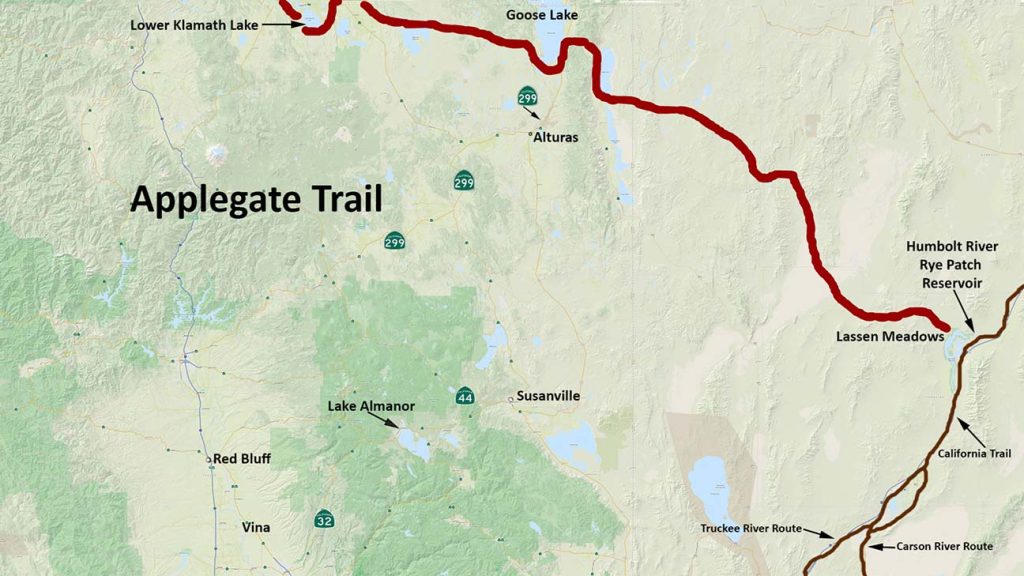Applegate Trail
Trails History
Early in 1846, Jesse Applegate and Levi Scott led a small exploring party of Oregon pioneers intending to open a safer overland route into Oregon Country. They ended up at Fort Hall in present-day southeastern Idaho. They were successful in persuading several Oregon-bound wagon trains to follow them back over this new route. Although there were considerable hardships, a southern route into Oregon had been established and several wagon parties used the new wagon trail in 1847 and 1848.
In 1848 Peter Lassen brought a small wagon train along the California Trail to the Applegate Trail intending to blaze a trail to his rancho north of present-day Chico. Fifty miles short of his ranch, his group was rescued by Oregonians captained by Peter Burnett. Burnett’s Cutoff between the Applegate and Lassen Trails was the sole wagon route between California and Oregon for a number of years, while the Lassen Trail became one of three main routes into northern California in the gold rush of 1849.
Soon after the discovery of gold at Sutter’s Mill on January 24, 1848, Pierson B. Reading discovered gold in the Klamath Mountains. Yreka was named the Siskiyou County seat in 1852. The Yreka Trail opened in 1852 as a cutoff from the Applegate Trail.
In 1852 William Nobles convinced the leaders of Shasta City that he had discovered a shorter and easier cutoff from the Lassen Trail directly to their city. The Nobles Trail became the major route to Shasta City and other Northern California locations until the railroad was completed.
Lockhart Wagon Road was named after the brothers who laid it out to increase their ferry service business. Its name was changed in the 1940s to Military Pass Road because it was built, in part, by the U.S. Army in 1855, but it originally used by emigrants.

Why Join OCTA?
Join us for tours, symposiums, hikes on the trails, and preservation activities with our fun and inviting CA/NV Chapter members.




